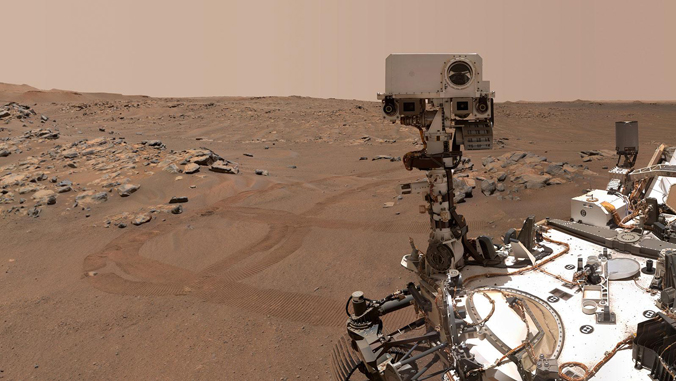
After three and a half years exploring Jezero Crater’s floor and river delta on Mars, NASA’s Perseverance rover will ascend to an area where University of Hawaiʻi at Mānoa members of the Mastcam-Z camera team will search for more discoveries that could rewrite Mars’ history.
UH Mānoa scientists and graduate students who are members of NASA’s instrument teams, began searching for signs of ancient life on Mars in February 2021.
Earth and Planetary Sciences graduate student Eleni Ravanis and her advisor Sarah Fagents, researcher in the Hawaiʻi Institute of Geophysics and Planetology, will be looking for rocks on the crater rim that might provide detailed insights into the earliest period of the planet’s history.
“Our samples are already an incredibly scientifically compelling collection, but the crater rim promises to provide even more samples that will have significant implications for our understanding of Martian geologic history,” said Ravanis. “This is because we expect to investigate rocks from the most ancient crust of Mars. These rocks formed from a wealth of different processes, and some represent potentially habitable ancient environments that have never been examined up close before.”
The rover has been exploring the floor of the 45 km-diameter Jezero Crater, where an ancient delta provides a window into the fluvial (river-related) history of the area. During that phase of the mission, the rover collected the first sedimentary rocks ever sampled from a planet other than Earth. These sedimentary rocks are important because they formed when particles of various sizes were transported by water and then deposited into a standing body of water; on Earth, liquid water is one of the most critical requirements for life as we know it.
Challenging terrain
Perseverance will soon begin a months-long ascent up the western rim of Jezero Crater that is likely to include some of the steepest and most challenging terrain the rover has encountered to date.
On the Crater Rim Campaign, Ravanis is one of the science leads, providing input into where the rover drives and which rocks should be investigated along the way. The rover should see very ancient rocks, perhaps more than 4 billion years old, that were excavated by the formation of Jezero crater.
“Examining these rocks up close and sampling them for later return to Earth will inform our understanding of not just Jezero Crater, but the planet Mars as a whole and through time,” said Ravanis.

